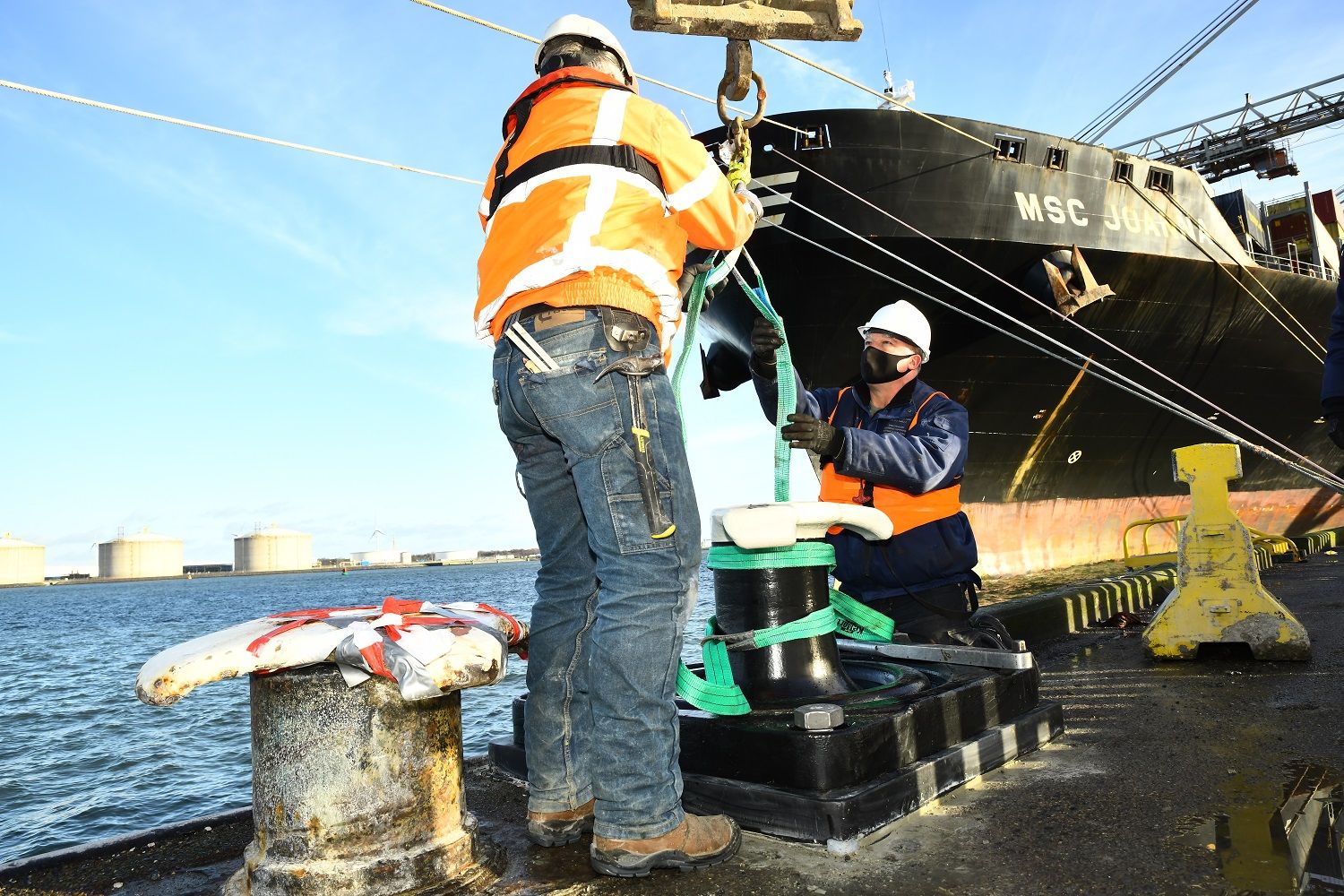Along the quay of the Hutchison Ports ECT Delta terminal on the Maasvlakte, the Port of Rotterdam Authority has installed a smart bollard as part of a trial. By measuring the strain on the mooring lines in real time, the bollard allows real-time monitoring of safety and provides a clearer picture of which vessels can moor at which quays.
The smart bollard was developed in collaboration with Straatman BV, Zwijndrecht. The trial is in line with the Port of Rotterdam Authority’s policy of making the port more efficient through digitisation.
Until now, it has not been possible to measure the strain on mooring lines. The lack of exact data measured on moored vessels meant maximum mooring loads exerted on the lines by the vessels and quay walls had to be assumed. These forces vary due to differences in local conditions. The smart bollard can help gain a better understanding of the forces involved.
Also read: Port of Rotterdam trials water injection dredging
Smart sensors
When force is applied to a bollard, it moves very slightly. A sensor measures the force and sends the results directly to the Port of Rotterdam Authority. Before the smart bollard was installed, it was successfully put through its paces on a test bench in Zwijndrecht.
The Port of Rotterdam Authority specialises in the construction and maintenance of quay walls. It manages 80 kilometres of quay wall and 200 kilometres of bank shoring, monitoring the structures using collected data. For example, sensors are installed in many quays and the results have shown that quay walls last much longer than had previously been assumed. This research has now resulted in the updating of the European standards for structural design (Eurocodes).
The smart bollard trial is part of a series of measures aimed at using digital technology to manage highly capital-intensive assets such as quay walls more efficiently.
Also read: The digital port is coming








